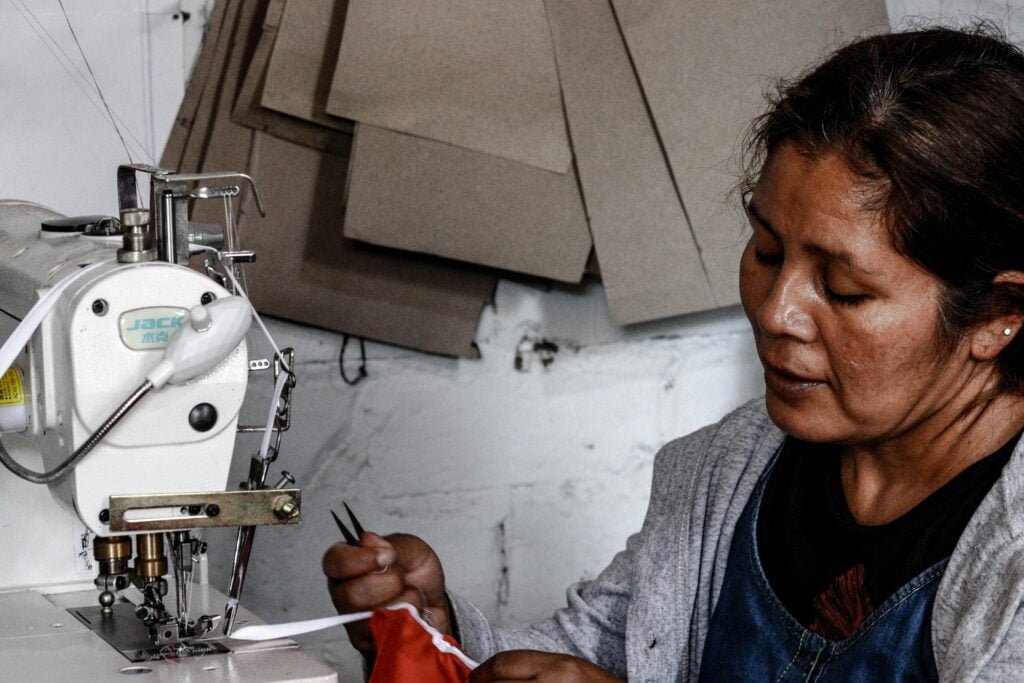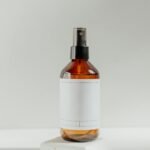
If you or someone you know suffers from sleep apnea, you might be wondering what the most effective treatment options are. Sleep apnea, a sleep disorder characterized by interrupted breathing during sleep, can have serious health consequences if left untreated. In this article, we will explore the best practices for sleep apnea treatment, including lifestyle changes, medical interventions, and alternative therapies. Discover how you can regain a restful night’s sleep and improve your overall health with these expert-recommended solutions.
Diagnosis
If you suspect that you may have sleep apnea, it is important to undergo proper diagnosis to understand the severity of your condition and develop an effective treatment plan. There are two main diagnostic methods that healthcare professionals may use: polysomnography and home sleep apnea tests.
Polysomnography
Polysomnography, also known as a sleep study, is typically conducted in a sleep center or hospital setting. During this test, various physiological parameters are monitored to assess your sleep patterns and detect any abnormalities. These parameters may include brain waves, eye movement, muscle activity, heart rate, and airflow. This comprehensive assessment helps healthcare professionals determine the presence and severity of sleep apnea.
Home Sleep Apnea Test
For individuals who find it difficult to undergo a sleep study in a clinical setting, a home sleep apnea test can be an alternative option. A portable device is provided to you, which measures similar physiological parameters as the polysomnography test. It is more convenient and allows you to sleep in the comfort of your own home, while still providing medical professionals with essential data to diagnose and evaluate the severity of your sleep apnea.
Lifestyle Changes
Making certain lifestyle changes can play an important role in managing sleep apnea and improving your overall sleep quality. These changes may include weight loss, regular exercise, and avoiding alcohol and sedatives.
Weight Loss
Excess weight can contribute to the development and worsening of sleep apnea. Losing weight, particularly around the neck and throat area, can help reduce the severity of your symptoms. Engaging in a well-balanced diet and regular exercise routine can aid in achieving and maintaining a healthy body weight.
Regular Exercise
Regular exercise has numerous benefits for overall health, and it can also help alleviate sleep apnea symptoms. Engaging in physical activity strengthens the muscles, including those in the upper airway, thereby reducing the likelihood of airway collapse during sleep. Aim for at least 30 minutes of moderate-intensity exercise most days of the week.
Avoiding Alcohol and Sedatives
Alcohol and sedatives can relax the muscles in the throat and contribute to the obstruction of the airway. It is advised to limit or completely avoid alcohol consumption, especially close to bedtime. Consult with your healthcare professional regarding any medications or substances that may potentially worsen sleep apnea symptoms.

Positional Therapy
Positional therapy involves modifying your sleeping position to reduce sleep apnea episodes. Sleeping on your side rather than your back can help prevent the collapse of the airway, as gravity works to keep the throat open. To aid in maintaining a side-sleeping position, special pillows or cushions specifically designed for sleep apnea patients can be utilized.
Sleeping on the Side
Training yourself to sleep on your side can take some practice and getting used to, especially if you have a habit of sleeping on your back. However, once you become accustomed to this new position, you may notice a significant reduction in sleep apnea symptoms.
Using Special Pillows or Cushions
Special pillows or cushions designed for sleep apnea patients can provide the necessary support and comfort to maintain a side-sleeping position. These pillows are typically contoured and can effectively keep the head, neck, and spine aligned, ensuring optimal airway passage.
Continuous Positive Airway Pressure (CPAP)
Continuous Positive Airway Pressure (CPAP) is a commonly used treatment method for moderate to severe sleep apnea. It involves wearing a CPAP machine, which delivers a continuous flow of pressurized air to keep your airways open during sleep. CPAP therapy has proven to be highly effective in reducing sleep apnea symptoms and promoting restful sleep.
Using a CPAP Machine
To initiate CPAP therapy, a healthcare professional will prescribe a CPAP machine based on your specific needs. These machines come with various features and settings to ensure comfort and effectiveness. The machine is connected to a mask that covers your nose, mouth, or both and gently delivers pressurized air.
Choosing the Right Mask
Choosing the right mask is crucial to ensure comfort and adherence to CPAP therapy. There are different types of masks available, including nasal masks, full-face masks, nasal pillows, and hybrid masks. Consult with your healthcare professional to determine which mask style best suits your individual needs and preferences.
Maintaining the Equipment
Regular maintenance of your CPAP equipment is important to ensure optimal performance and longevity. Follow the manufacturer’s instructions for cleaning and replacing filters, tubing, and other components. It is also essential to keep the mask clean and replace it periodically as needed. Regular cleaning and maintenance will help prevent the buildup of bacteria and ensure effective therapy.

Oral Appliances
Oral appliances, also known as dental devices, can be an effective treatment option for individuals with mild to moderate sleep apnea or those who cannot tolerate CPAP therapy. These devices are custom-made by a dentist and are worn in the mouth during sleep to reposition the jaw and tongue to help keep the airway open.
Mandibular Advancement Devices (MAD)
Mandibular Advancement Devices are the most commonly prescribed oral appliances for sleep apnea. These devices resemble sports mouthguards and work by gradually moving the lower jaw forward, thereby opening the airway. It is essential to have these devices custom-fitted by a dentist to ensure proper function and avoid any discomfort.
Tongue Retaining Devices
Tongue Retaining Devices are another type of oral appliance that are specifically designed to hold the tongue forward during sleep. By preventing the tongue from falling back and obstructing the airway, these devices can effectively reduce sleep apnea episodes. Like MADs, it is important to have these devices fitted properly by a dentist.
Surgery
In severe cases of sleep apnea or when other treatment options have proven ineffective, surgery may be considered. Surgical procedures are typically aimed at enlarging the airway or correcting structural abnormalities that contribute to sleep apnea. It is important to consult with a sleep specialist and possibly an ear, nose, and throat (ENT) surgeon to determine the most appropriate surgical approach for your specific situation.
Uvulopalatopharyngoplasty (UPPP)
Uvulopalatopharyngoplasty is a surgical procedure that involves removing excess tissue from the soft palate, uvula, and pharynx to widen the airway. This procedure can help alleviate snoring and reduce the severity of sleep apnea. UPPP is usually performed under general anesthesia and may require an overnight hospital stay.
Maxillomandibular Advancement (MMA)
Maxillomandibular Advancement is a more extensive surgical procedure that involves repositioning the upper and lower jaw to increase the size of the airway. This surgery is particularly beneficial for individuals with jaw abnormalities or a narrow airway. MMA is performed under general anesthesia and may require a hospital stay.
Tracheostomy
Tracheostomy is considered a last resort option for severe sleep apnea cases that are unresponsive to other treatments. It involves surgically creating a permanent opening in the windpipe and inserting a tube to bypass the upper airway obstruction. Although highly effective, tracheostomy is typically reserved for extreme cases due to its invasive nature and potential complications.

Nasal Decongestants and Steroids
For individuals with nasal congestion or allergies that contribute to sleep apnea symptoms, nasal decongestants or steroids may be recommended. These medications work by reducing inflammation in the nasal passages, improving airflow, and reducing nasal congestion.
Nasal Sprays
Over-the-counter or prescription nasal sprays can provide temporary relief from nasal congestion. Decongestant nasal sprays constrict blood vessels in the nasal passages, reducing swelling and congestion. Nasal steroid sprays, on the other hand, reduce inflammation in the nasal passages, allowing for improved airflow. It is important to follow the instructions and recommendations of your healthcare professional when using nasal sprays to avoid dependency or other side effects.
Nasal Strips
Nasal strips are adhesive strips that are applied externally on the nose to help widen the nasal passages and improve airflow. They can be a simple and non-invasive solution for individuals with mild sleep apnea or nasal congestion. Nasal strips are readily available over-the-counter and can be used as a temporary measure or in conjunction with other treatment modalities.
Alternative Therapies
In addition to conventional treatment options, some individuals may find alternative therapies beneficial in managing their sleep apnea symptoms. While the effectiveness of these therapies may vary from person to person, they can be explored as complementary approaches to conventional treatments.
Acupuncture
Acupuncture is an ancient Chinese practice that involves inserting thin needles into specific points of the body to restore balance and promote healing. Some studies suggest that acupuncture may provide relief for sleep apnea symptoms by promoting relaxation, reducing inflammation, and improving overall well-being. However, further research is needed to establish the efficacy of acupuncture in treating sleep apnea.
Hypnosis
Hypnosis, conducted by a trained therapist, involves entering a relaxed state of heightened focus and concentration. It may be used to address underlying psychological factors that contribute to sleep apnea, such as anxiety or stress. While hypnosis can be a valuable tool for relaxation and managing psychological symptoms, its role in directly treating sleep apnea is still being investigated.
Yoga
Yoga combines gentle physical postures, breathing exercises, and meditation to promote relaxation, flexibility, and overall well-being. Some yoga poses and breathing techniques may help strengthen the muscles of the upper airway and enhance respiratory function. Incorporating yoga into your routine may improve sleep quality and reduce sleep apnea symptoms. However, it is essential to practice yoga under the guidance of a qualified instructor, particularly if you are new to the practice.
Behavioral Therapies
Behavioral therapies can be effective in addressing psychological and behavioral factors that contribute to sleep apnea. Two common behavioral therapies used in sleep apnea treatment are Cognitive Behavioral Therapy (CBT) and relaxation techniques.
Cognitive Behavioral Therapy (CBT)
Cognitive Behavioral Therapy aims to identify and modify negative thought patterns and behaviors that contribute to sleep disturbances. It can help individuals develop healthier sleep habits, manage stress and anxiety, and establish a relaxing bedtime routine. CBT is usually conducted by a qualified therapist and may involve individual or group sessions.
Relaxation Techniques
Relaxation techniques, such as deep breathing exercises, progressive muscle relaxation, or guided imagery, can help reduce stress, calm the mind, and promote better sleep. These techniques can be integrated into your daily routine, particularly before bedtime, to create a peaceful and conducive environment for sleep. Learning and practicing relaxation techniques may help reduce sleep apnea symptoms and improve overall sleep quality.
In conclusion, the management of sleep apnea involves a multidimensional approach that may include lifestyle changes, positional therapy, the use of continuous positive airway pressure (CPAP) machines or oral appliances, surgical interventions, nasal decongestants or steroids, alternative therapies, and behavioral techniques. It is important to consult with a healthcare professional to determine the most appropriate treatment plan based on the severity of your condition and individual needs. By implementing these best practices and working closely with your healthcare team, you can effectively manage sleep apnea and improve your overall quality of life.









